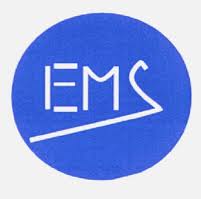HEPEX-SIP Topic: Communication and Decision Making (2/4)
Contributed by Florian Pappenberger, Liz Stephens, Jutta Thielen, Schalk-Jan van Andel and Maria-Helena Ramos
What can we find about communication and use of forecasts in decision making within HEPEX and related activities?
The HEPEX mission is: “to demonstrate the added value of hydrological ensemble predictions (HEPS) for emergency management and water resources sectors to make decisions that have important consequences for economy, public health and safety.” Clearly, the added value of the EPS has to be demonstrated to contain more information than a single forecast, but equally important is that decision makers understand probabilistic forecasts and act accordingly – and communication is a key element in this process. The following provides a (non-exhaustive) overview of activities within HEPEX, focussing on communication and decision making.
Communication and decision making in HEPEX events:
HEPEX workshop on post-processing and downscaling of atmospheric ensemble forecasts for hydrologic applications (http://lib2.znate.ru/docs/index-302407.html)
Already at the 2nd general HEPEX workshop, in 2005, a presentation by Ray and Webb focused on the points of view of EPS users in “Hydrologic predictions in the context of regional decision support systems: User studies”.
At the 2007 international HEPEX meeting in Stresa, Italy, most presentations did not yet focus on communication and decision making. Applications of EPS were still mainly focusing on flood forecasting. Within the “users perspective” topic proposed for discussion in the workshop circular, Van Andel et al. (2008) presented the development of a decision strategy for flood control (“Rijnland case study: anticipatory control of a lowlying regional water system”). Among almost 50 oral and poster presentations, on the communication and use topic we can also highlight the following presentations: Pappenberger et al., “A user guide to the risk and uncertainty decision tree Wiki site”; Howard, “Hydroelectric Operations – Ensemble Optimization Procedures (EOP)”; Hartman, “Moving toward operational hydrologic ensemble forecasts”. Despite these presentations, decision making processes, as well as communication and visualisation of ensemble predictions to facilitate implementation and use of EPS were not however fully discussed within this HEPEX meeting.
The 2009 HEPEX special topics event on “Postprocessing and Downscaling Atmospheric Forecasts for Hydrologic Applications” held at Météo-France, Toulouse, France jointly with COST action 731, programmed a special session on Operational Systems: Hydrological applications and Users & Decision Makers. In this session, communicating uncertainty information in warnings of natural hazards was presented by Bruen et al. in “Visualizing flood forecasting uncertainty: some current European EPS platforms”. Economic aspects of EPS were presented by van Andel in “Cost-benefit analysis for operational water management with ensemble Predictions”. Operational systems in hydrology had also special attention. The focus this time was not only on flood forecasting systems (Thielen et al., with “The European Flood Alert System – a review”; Restrepo and Schaake with “Status of hydrologic ensemble prediction at U.S. National Weather service”, Zappa et al with propagation of uncertainty from observing systems and NWP into hydrological models), but also on forecast inflows for hydroelectricity production (Mathevet et al. “Use of probabilistic forecast at EDF: a multiscale and multi-scale problem”; McCollor, “Ensemble weather forecasting at BC hydro”). Selected works were published in a special issue in Atmospheric Science Letters (vol. 11, issue 2, April 2010).
Users were more and more present in HEPEX workshops and special topics events, increasing the diversity of EPS applications. In 2011, for instance, Wang et al., presented a work entitled “Innovative Tools for Water Quality/Quantity Management: New York City’s Operations Support Tool” during the HEPEX International workshop on post-processing and verification of hydrological ensemble predictions, held on June in the Netherlands. The topic of post-processing was recognized as an important issue in operational systems for hydroelectricity production (Chardon et al., “Comparison of rainfall-runoff model post-processing approaches in the context of an operational ensemble forecasting chain”) and flood forecasting (Hartman, “NWS Requirements for Operational Hydrologic Post-Processing”).
Communication and decision making in other conferences:
 At the yearly General assembly of the European Geophysical Union (EGU), sessions are organised that are related to ensemble prediction, uncertainties and decision-making. These sessions are mainly organized within the “Hydrological Forecasting” sub-division. In recent years, an increase of contributions on communicating probabilistic forecasts can be seen.
At the yearly General assembly of the European Geophysical Union (EGU), sessions are organised that are related to ensemble prediction, uncertainties and decision-making. These sessions are mainly organized within the “Hydrological Forecasting” sub-division. In recent years, an increase of contributions on communicating probabilistic forecasts can be seen.
In 2006, Ramos et al. presented the work entitled “Communication of uncertainty in flood forecasting and warning to end users: case study on the European flood alert system” within a specific session for hydrological ensemble forecasting. In 2010, Nobert et al. presented challenges in communicating and using ensemble forecasts, Ramos et al. presented: “Communicating uncertainty in hydrological forecasts: mission impossible?”, and Zappa reflected on 3-years of experiences in explaining ensemble predictions to users in MAP D-PHASE project. In 2011, Van Andel and Lobbrecht presented experiences from introducing ensemble hydrological predictions as an operational pilot for the Rijnland Water Board in the Netherlands, while Demargne et al. focused on operational hydrological EPS in the U.S. National Weather Service. In 2012, the hydro-meterological ensemble prediction session gave emphasis to decision making with probabilistic forecast information in an interactive game on flood control with the audience (van Andel et al., 2012 and Ramos et al., 2012). The interactive experience of risk-based decision-making was repeated in 2013 for the case of water management in a multi-purpose reservoir (Pappenberger et al., 2013).
Complementarily, at EGU in 2012, a new EGU session was opened to encourage discussions on the value of forecasts for decision-making (“Why predict? The value of prediction in hydrological sciences and policy”), where ensemble forecasts were also a topic of discussion. In 2013, this session also attracted several presentations on decision-making. Through similar awareness and training activities, experience is gained on decision making with EPS by the users, on the one hand, and on presenting or visualising of EPS by scientists, developers, and forecasters on the other hand.
At the AGU fall meetings, sessions including ensemble predictions can also be seen. In the 2010 session “Advances in Hydrologic Modeling and Prediction”, Mathevet et al., presented the work “Estimating and communicating hydrometeorological uncertainty in a context of operational hydrological ensemble forecasts” In 2011, Stephens et al. presented experiences “Using an online game to evaluate effective methods of communicating ensemble model output to different audiences”. In 2012, Wood et al. in their presentation about HEPEX emphasised the importance of the communication and use in decision making HEPEX theme.


Meetings of the European and the American meteorological societies have also seen sessions on hydrological applications and works on ensemble prediction. Since 2009, the European Meteorological Society bi-annual conference has a session on “Interfacing hydrological and meteorological models in forecasting systems”, widening the possibilities of operational forecasters and users to interact with the scientific community in their developments. One of the six major questions this session wants to address is: “How should the forecasts be presented and what type of risk analysis can be used in supporting decision makers?”. The 2013 93rd American Meteorological Society Annual Meeting meeting included a session on “Water Resources Applications of Hydrometeorological Analyses and Predictions”, in which Schaake et al. presented a poster on “Diagnostic Tools for Hydrologic Ensemble Forecast Operations”, which included experimental diagnostic graphical displays for improved communication for the US National Weather Service. During a dedicated HEPEX side meeting discussion at the AGU on how to prioritise research needs within the HEPEX community, the suggestion was made to always start with with decision maker’s and end users needs as this would lead naturally to those areas that need to be addressed most urgently to improve the decision making.
Communication and decision making in HEPEX Special Issues:
 In 2006 a special issue in HESS was prepared on “Hydrological Prediction Uncertainty“. Papers from this issue made it to final publication in HESS. Concerning communication and use of EPS, Roulin (2007) focussed explicitly on decision making on the basis of EPS for flood control through application of a standard cost-loss model.
In 2006 a special issue in HESS was prepared on “Hydrological Prediction Uncertainty“. Papers from this issue made it to final publication in HESS. Concerning communication and use of EPS, Roulin (2007) focussed explicitly on decision making on the basis of EPS for flood control through application of a standard cost-loss model.
In 2010, the special issue of Atmospheric Science Letters on the: Joint HEPEX/COST731 workshop on downscaling NWP products and propagation of uncertainty in hydrological modelling, Toulouse, 2009, was published with, the summary of the COST731 working group 3 achievements which addresses the visualisation of flood forecasting uncertainty from several European EPS platforms.
In 2011, special edition of Advances in Geosciences “Towards practical applications in ensemble hydro-meteorological forecasting” was published (Volume 29). Although none of the publications specifically focuses on the communication and visualisation of results, the spatial and temporal representation of ensemble prediction results plays a role for example in Alfieri et al. (Adv. Geosci., 29, 69-75, 2011) where the possibilities of using LEPS for flashflood forecasting are being explored.
The most recent special issue on Hydrological Ensemble Prediction Systems (Cloke et al., 2013) shows the increasing attention for communication and decision making by explicitly incorporating the thematic section: Communicating Uncertainty. In this section, Zappa et al. (2013) present the visualisation of EPS performance metrics, including a new-proposed metric measuring capability to forecast timing and magnitude of streamflow peaks. Pappenberger et al. (2013) discuss perceptions of an expert group exposed to various visualisation methods of EPS and responses when asked which information extracted from EPS is essential to be presented to decision makers. Demeritt et al. (2013) discuss in more detail the entire communication and decision process, including different perception of users throughout Europe, for sending and responding to pre-alerts on the basis of the European Flood Awareness system.
________________
Part 1: What is communication and decision making (https://hepex.org.au/hepex-sip-topic-communication-and-decision-making-14)
Part 3: Literature review on communication and decision making (https://hepex.org.au/hepex-sip-topic-communication-and-decision-making-34)
Part 4: Challenges and research needs (https://hepex.org.au/hepex-sip-topic-communication-and-decision-making-44)

0 comments